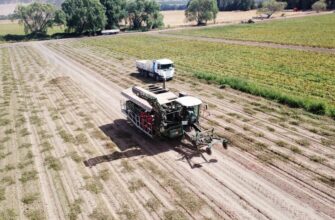- Mastering Bitcoin Spot Trading on Kraken: Why Daily Timeframe Risk Management Matters
- Understanding Spot Trading Bitcoin on Kraken
- Why Daily Timeframes Optimize Risk Management
- Core Risk Management Strategies for Daily Bitcoin Trading
- 1. Position Sizing Rules
- 2. Strategic Stop-Loss Placement
- 3. Risk-Reward Ratios
- 4. Correlation Awareness
- Leveraging Kraken’s Tools for Risk Control
- Common Daily Trading Pitfalls to Avoid
- Frequently Asked Questions
- Q: How does daily timeframe trading differ from scalping on Kraken?
- Q: What’s the optimal time to analyze daily Bitcoin charts?
- Q: Can I automate risk management on Kraken?
- Q: How much capital should I start with for daily spot trading?
Mastering Bitcoin Spot Trading on Kraken: Why Daily Timeframe Risk Management Matters
Spot trading Bitcoin on Kraken offers direct exposure to crypto’s most volatile asset – but without robust risk management, especially on daily timeframes, you’re navigating stormy seas without a compass. Unlike leveraged positions, spot trading involves buying/selling actual Bitcoin, eliminating liquidation risks but still demanding strategic safeguards against market swings. This guide unpacks actionable daily timeframe risk management tactics tailored for Kraken traders, helping you protect capital while pursuing profits.
Understanding Spot Trading Bitcoin on Kraken
Kraken, a top-tier cryptocurrency exchange, enables spot trading where Bitcoin (BTC) is exchanged instantly at current market prices. Unlike futures, you own the asset upon purchase. Key advantages include:
- High Liquidity: Deep order books ensure minimal slippage
- Security-First Approach: 95% cold storage funds and regulatory compliance
- Advanced Charting: Built-in TradingView tools for technical analysis
Why Daily Timeframes Optimize Risk Management
Daily charts (1D) filter market noise, providing clearer trend context than shorter intervals. Benefits include:
- Reduced emotional trading by minimizing reaction to intraday volatility
- Clearer identification of support/resistance levels
- Alignment with fundamental catalysts (e.g., macroeconomic news)
- Lower transaction frequency, decreasing fee overhead
Core Risk Management Strategies for Daily Bitcoin Trading
1. Position Sizing Rules
Never risk more than 1-2% of total capital per trade. On Kraken, calculate position size using:
- Entry price
- Stop-loss level (e.g., below key daily support)
- Account balance
2. Strategic Stop-Loss Placement
Set stops based on daily structure, not arbitrary percentages:
- Below swing lows in uptrends
- Above swing highs in downtrends
- Adjust with trailing stops as trends mature
3. Risk-Reward Ratios
Require minimum 1:3 reward-to-risk. If risking $100, target $300 profit. Use daily chart levels to define realistic take-profit zones.
4. Correlation Awareness
Monitor Bitcoin’s daily correlation with:
- Nasdaq (tech stocks)
- USD strength (DXY index)
- Major altcoins (ETH)
Leveraging Kraken’s Tools for Risk Control
- Price Alerts: Set notifications for stop-loss or take-profit levels
- Withdrawal Whitelists: Prevent unauthorized fund transfers
- Two-Factor Authentication (2FA): Mandatory for account security
- Kraken Pro Interface: Advanced order types like OCO (One Cancels Other)
Common Daily Trading Pitfalls to Avoid
- Ignoring weekly/monthly trend context
- Moving stop-losses further away during losses
- Overtrading during low-volatility periods
- Failing to adjust for Bitcoin halving cycles
Frequently Asked Questions
Q: How does daily timeframe trading differ from scalping on Kraken?
A: Daily trading involves holding positions for days/weeks based on macro trends, while scalping targets minute-to-minute price changes. Daily framing reduces stress and transaction costs but requires patience.
Q: What’s the optimal time to analyze daily Bitcoin charts?
A: Check charts at the daily close (00:00 UTC) when candles finalize. This avoids false signals from intraday wicks and aligns with global market opens.
Q: Can I automate risk management on Kraken?
A: Yes! Use Kraken Pro’s advanced order types: Stop-Loss (SL) limits trigger sells at specified prices, while Take-Profit (TP) orders auto-close positions at targets. Combine them with OCO orders for full automation.
Q: How much capital should I start with for daily spot trading?
A: Begin with disposable capital you can afford to lose. $500-$1,000 allows meaningful position sizing while limiting risk. Never trade with emergency funds.
Successful Bitcoin spot trading on Kraken hinges on disciplined daily timeframe strategies. By anchoring decisions to 1D charts, enforcing strict risk controls, and utilizing Kraken’s security features, you transform volatility from a threat into opportunity. Remember: In crypto markets, survival isn’t about perfect entries – it’s about impeccable risk management.








